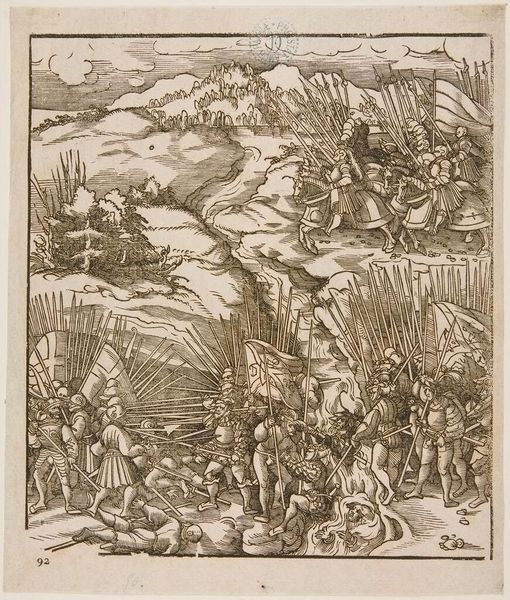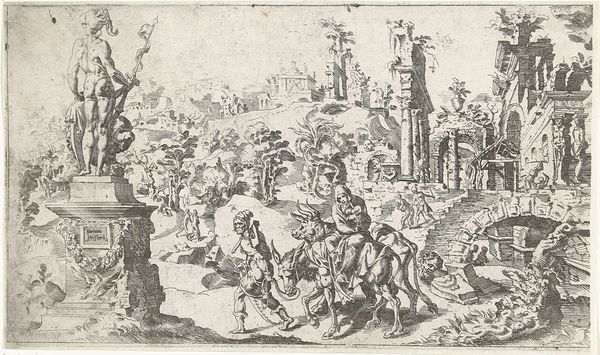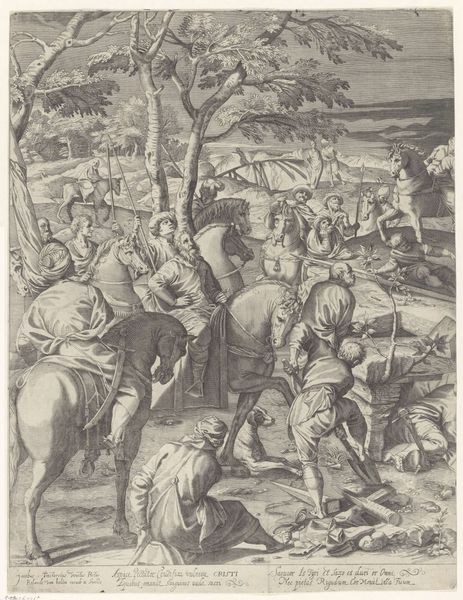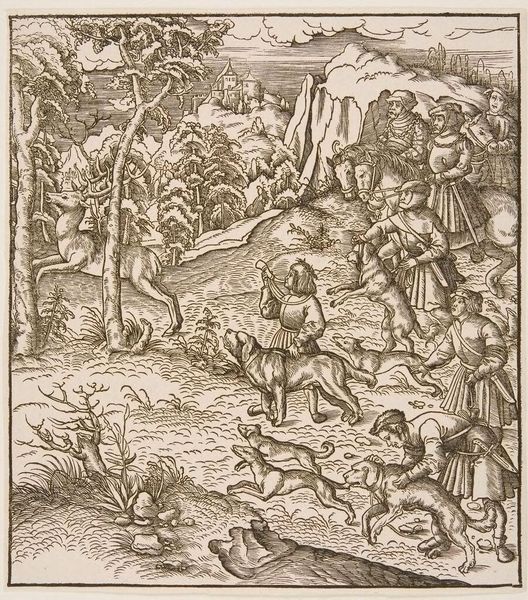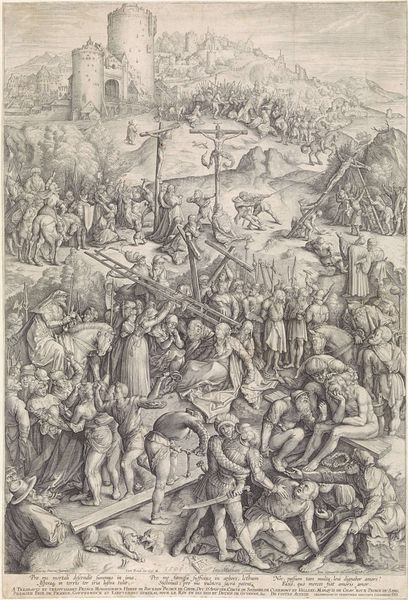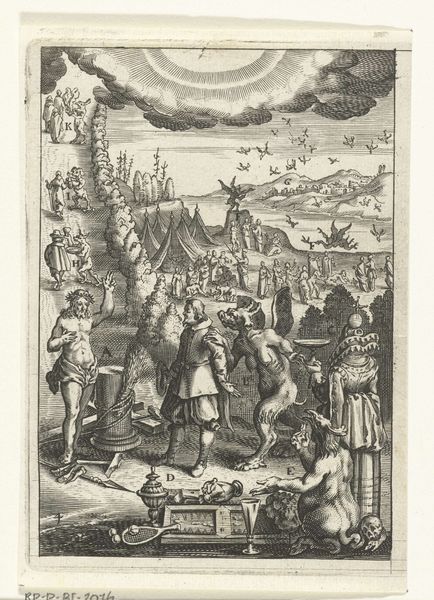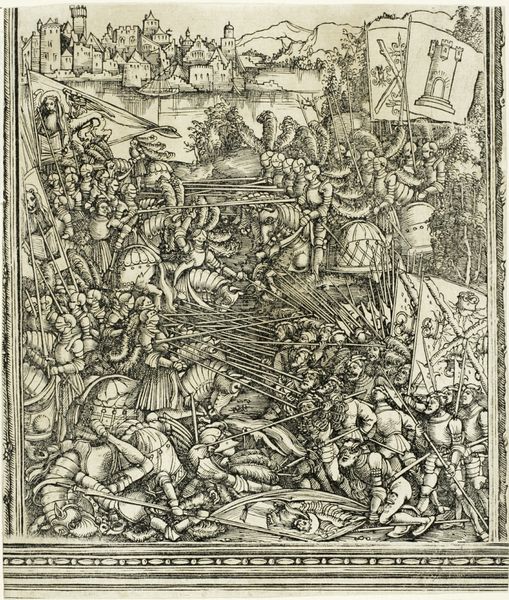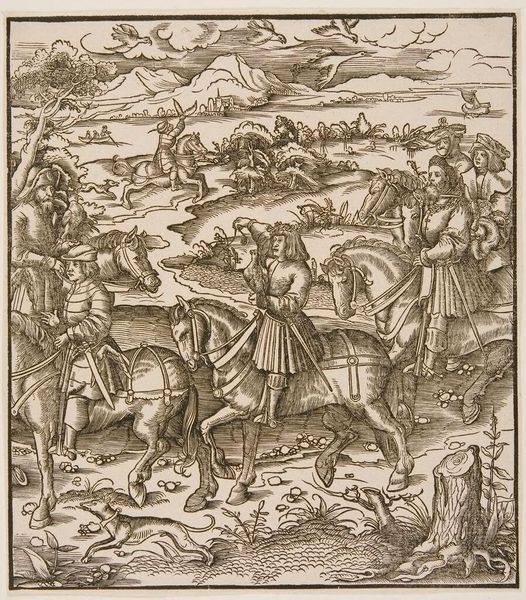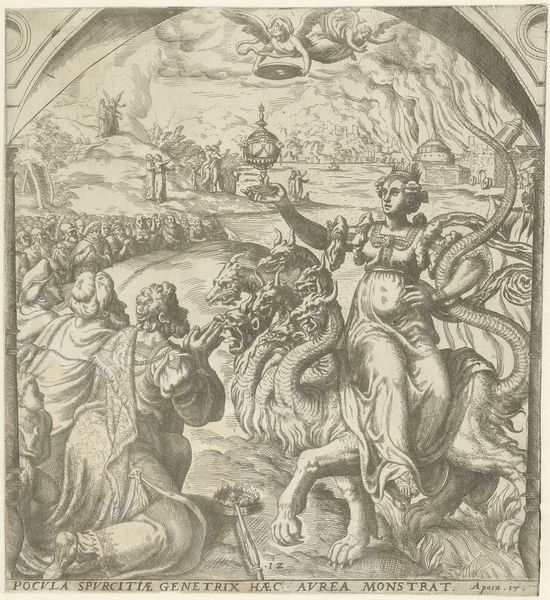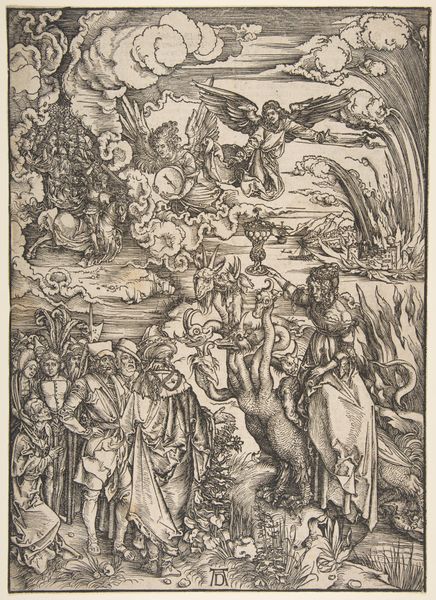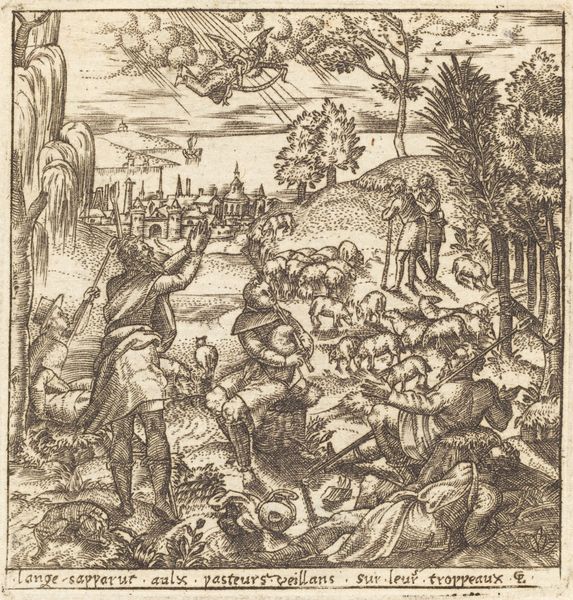
Shadrach, Meshach en Abednego in de vurige oven c. 1620 - 1652
0:00
0:00
abrahamvandenhecken
Rijksmuseum
print, engraving
#
narrative-art
#
baroque
# print
#
landscape
#
history-painting
#
engraving
Dimensions: height 206 mm, width 157 mm
Copyright: Rijks Museum: Open Domain
Curator: Abraham van den Hecken created this engraving around 1620 to 1652. It’s entitled "Shadrach, Meshach and Abednego in the Fiery Furnace." Editor: My first impression is the chaos! There are masses of people and horses, and the dramatic play of light and shadow definitely catches the eye. Curator: It depicts a scene from the Book of Daniel. King Nebuchadnezzar commands everyone to worship a golden idol, but Shadrach, Meshach, and Abednego refuse, adhering to their faith. As punishment, they are thrown into a fiery furnace, but God protects them. Editor: You can see how the formal composition reinforces that drama. The fiery furnace acts almost as a visual focus, all these lines converging towards it, yet the three figures remain central. It’s intriguing how van den Hecken has composed this to emphasize both the turmoil and the serenity within it. Curator: Absolutely. This print reflects the religious and political tensions of the 17th century. The story served as a powerful allegory, reminding people of the importance of religious conviction and the potential consequences of challenging authority. Editor: The intricate details, especially considering it’s an engraving, create depth and texture. And the landscape context gives a perspective that extends beyond the immediate events. The sheer number of figures and the architectural forms work together. Curator: Beyond just the immediate narrative, I think, that Van den Hecken's visualization provided a way for viewers to understand their place within these grand narratives. In a time of intense religious conflict in the Netherlands, images like these became focal points of ideological arguments. Editor: A fitting point, considering how powerful those contrasts are; divine protection against human tyranny; obedience versus defiance. Curator: The enduring quality of prints like these lies in their ability to act as conduits to understand pivotal eras of cultural upheaval. Editor: I will remember its complex contrasts of composition. The lines both converge towards, yet emanate outward from, that central furnace.
Comments
No comments
Be the first to comment and join the conversation on the ultimate creative platform.
